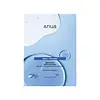What's inside
What's inside
 Key Ingredients
Key Ingredients

 Benefits
Benefits

 Concerns
Concerns

 Ingredients Side-by-side
Ingredients Side-by-side

Water
Skin ConditioningDipropylene Glycol
HumectantGlycereth-26
HumectantButylene Glycol
Humectant1,2-Hexanediol
Skin ConditioningPanthenol
Skin ConditioningTrehalose
HumectantHexylene Glycol
EmulsifyingHydroxyacetophenone
AntioxidantXanthan Gum
EmulsifyingPropolis Extract
Skin ConditioningRoyal Jelly Extract
Skin ConditioningHoney Extract
HumectantDisodium EDTA
Polyglyceryl-10 Myristate
Skin ConditioningPolyglyceryl-10 Laurate
Skin ConditioningPimpinella Anisum Fruit Extract
MaskingVanilla Planifolia Fruit Extract
Skin ConditioningCamellia Sinensis Leaf Extract
AntimicrobialRosa Centifolia Flower Water
Skin ConditioningPyrus Communis Fruit Extract
Skin ConditioningCocos Nucifera Oil
MaskingFragaria Chiloensis Fruit Extract
Skin ConditioningRosa Damascena Flower Water
MaskingWater, Dipropylene Glycol, Glycereth-26, Butylene Glycol, 1,2-Hexanediol, Panthenol, Trehalose, Hexylene Glycol, Hydroxyacetophenone, Xanthan Gum, Propolis Extract, Royal Jelly Extract, Honey Extract, Disodium EDTA, Polyglyceryl-10 Myristate, Polyglyceryl-10 Laurate, Pimpinella Anisum Fruit Extract, Vanilla Planifolia Fruit Extract, Camellia Sinensis Leaf Extract, Rosa Centifolia Flower Water, Pyrus Communis Fruit Extract, Cocos Nucifera Oil, Fragaria Chiloensis Fruit Extract, Rosa Damascena Flower Water
Water
Skin ConditioningDipropylene Glycol
HumectantButylene Glycol
HumectantGlycerin
HumectantDiglycerin
HumectantBetula Platyphylla Japonica Juice
Skin ConditioningBeta-Glucan
Skin ConditioningSodium Hyaluronate
HumectantHydroxypropyltrimonium Hyaluronate
Sodium Acetylated Hyaluronate
HumectantHydrolyzed Hyaluronic Acid
HumectantHyaluronic Acid
HumectantSodium Hyaluronate Crosspolymer
HumectantHydrolyzed Sodium Hyaluronate
Skin ConditioningPotassium Hyaluronate
Skin ConditioningDipotassium Glycyrrhizate
HumectantTrehalose
HumectantAllantoin
Skin ConditioningButyrospermum Parkii Butter
Skin ConditioningPhytosphingosine
Skin ConditioningCeramide NP
Skin ConditioningGlucose
HumectantXylitol
HumectantXylitylglucoside
HumectantAnhydroxylitol
HumectantArginine
MaskingCaffeine
Skin ConditioningBiosaccharide Gum-1
HumectantCarbomer
Emulsion StabilisingHydroxyacetophenone
AntioxidantCaprylyl Glycol
EmollientEthylhexylglycerin
Skin Conditioning1,2-Hexanediol
Skin ConditioningSodium Phytate
Water, Dipropylene Glycol, Butylene Glycol, Glycerin, Diglycerin, Betula Platyphylla Japonica Juice, Beta-Glucan, Sodium Hyaluronate, Hydroxypropyltrimonium Hyaluronate, Sodium Acetylated Hyaluronate, Hydrolyzed Hyaluronic Acid, Hyaluronic Acid, Sodium Hyaluronate Crosspolymer, Hydrolyzed Sodium Hyaluronate, Potassium Hyaluronate, Dipotassium Glycyrrhizate, Trehalose, Allantoin, Butyrospermum Parkii Butter, Phytosphingosine, Ceramide NP, Glucose, Xylitol, Xylitylglucoside, Anhydroxylitol, Arginine, Caffeine, Biosaccharide Gum-1, Carbomer, Hydroxyacetophenone, Caprylyl Glycol, Ethylhexylglycerin, 1,2-Hexanediol, Sodium Phytate
Ingredients Explained
These ingredients are found in both products.
Ingredients higher up in an ingredient list are typically present in a larger amount.
1,2-Hexanediol is a synthetic liquid and another multi-functional powerhouse.
It is a:
- Humectant, drawing moisture into the skin
- Emollient, helping to soften skin
- Solvent, dispersing and stabilizing formulas
- Preservative booster, enhancing the antimicrobial activity of other preservatives
Butylene Glycol (or BG) is used within cosmetic products for a few different reasons:
Overall, Butylene Glycol is a safe and well-rounded ingredient that works well with other ingredients.
Though this ingredient works well with most skin types, some people with sensitive skin may experience a reaction such as allergic rashes, closed comedones, or itchiness.
Learn more about Butylene GlycolDipropylene Glycol is a synthetically created humectant, stabilizer, and solvent.
This ingredient helps:
Dipropylene glycol is technically an alcohol, but it belongs to the glycol family (often considered part of the ‘good’ alcohols). This means it is hydrating and gentle on skin unlike drying solvent alcohols like denatured alcohol.
As a masking agent, Dipropylene Glycol can be used to cover the smell of other ingredients. However, it does not have a scent.
Studies show Dipropylene Glycol is considered safe to use in skincare.
Learn more about Dipropylene GlycolHydroxyacetophenone is antioxidant with skin conditioning and soothing properties. It also boosts the efficiency of preservatives.
This ingredient is not irritating or sensitizing.
Trehalose is a disaccharide made of two glucose molecules (glucose is sugar!). Trehalose is used to help moisturize skin. It also has antioxidant properties.
As a humectant, trehalose helps draw moisture from the air to your skin. This helps keep your skin hydrated.
Due to its antioxidant properties, trehalose may help with signs of aging. Antioxidants help fight free-radical molecules, unstable molecules that may damage your skin.
In medicine, trehalose and hyaluronic acid are used to help treat dry eyes.
Some animals, plants, and bacteria create trehalose as a source of energy to survive freeze or lack of water.
Learn more about TrehaloseWater. It's the most common cosmetic ingredient of all. You'll usually see it at the top of ingredient lists, meaning that it makes up the largest part of the product.
So why is it so popular? Water most often acts as a solvent - this means that it helps dissolve other ingredients into the formulation.
You'll also recognize water as that liquid we all need to stay alive. If you see this, drink a glass of water. Stay hydrated!
Learn more about Water